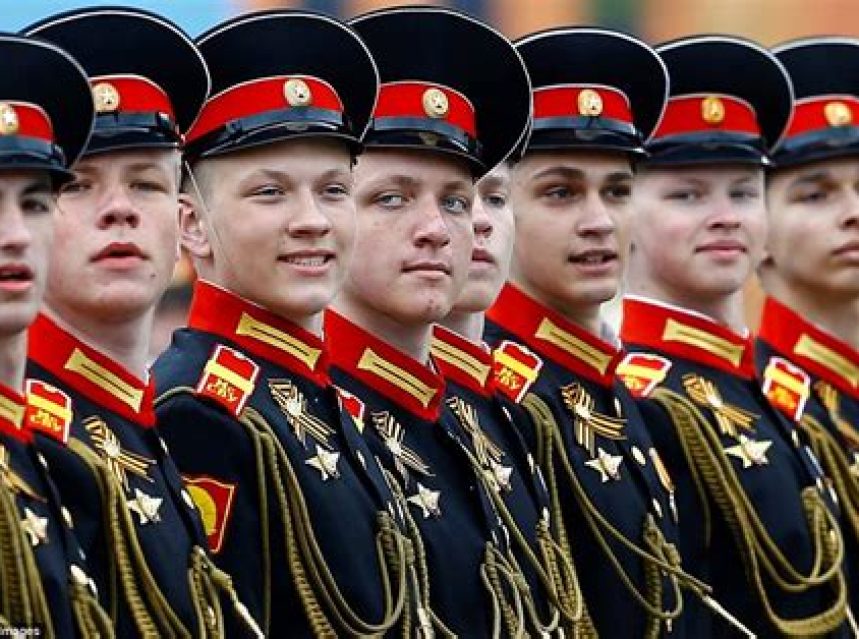Russian Military Uniform

Evolution of Russian Military Uniforms: A Glimpse into Centuries of Transformation
Russian military attire has been continuously evolving throughout history, reflecting the country’s rich cultural heritage, diverse climatic regions, and significant political changes. From the grandeur of the Tsarist era to the functional designs of the Soviet Union, the evolution of Russian military uniforms is a fascinating journey. In this blog post, we delve into the distinctive features that make the attire unique, explore the impact of climate on design choices, uncover the symbolism behind the insignia, and discuss recent updates and modernization efforts. Join us as we unravel the intriguing stories behind Russia’s military clothing.
Evolution of Russian military uniforms
The evolution of Russian military uniforms is an intriguing journey through time, reflecting the country’s rich history and cultural heritage. From the earliest days of the Russian Empire to the modern era, the uniforms worn by Russian soldiers have undergone significant changes to adapt to various factors, such as advancements in technology, shifts in warfare tactics, and cultural influences. In this blog post, we will explore the different stages of the evolution of Russian military uniforms, highlighting their distinctive features and the impact of climate on the clothing worn by the soldiers.
One of the earliest distinctive features of Russian military attire was the use of colorful and ornate uniforms, adorned with intricate embroidery and decorative elements. These uniforms not only served to distinguish Russian soldiers on the battlefield but also showcased the country’s wealth and splendor. However, as warfare became more mechanized and uniforms needed to be practical and functional, there was a shift towards simpler and more utilitarian designs.
In the early 20th century, the impact of climate on Russian military clothing became evident. Russia’s vast and diverse geographical landscape, ranging from icy tundras to scorching deserts, meant that soldiers needed to be equipped with uniforms suitable for extreme weather conditions. Thick wool coats, fur-lined hats, and insulated boots became essential components of the Russian military attire, providing warmth and protection against the harsh Russian winters.
The symbolism in Russian military uniform insignia is an integral part of its evolution. Each symbol and badge carries a significant meaning, representing the individual’s rank, unit, achievements, and affiliation. For example, the iconic red star on the caps of Russian soldiers symbolizes the Red Army’s victory in the October Revolution of 1917. These insignia not only foster a sense of pride and identity among the soldiers but also serve as a visual representation of Russia’s military prowess.
In recent years, the Russian military attire has undergone significant updates and modernization to meet the demands of a rapidly evolving world. With advancements in technology and the emergence of new warfare tactics, the focus has shifted towards incorporating lightweight and high-performance materials into the uniforms. Additionally, camouflage patterns that blend with different terrains have become prevalent to provide better concealment and protection on the battlefield.
List of distinct features of Russian military uniforms:
- Colorful and ornate designs
- Intricate embroidery and decorative elements
- Shift towards simpler and utilitarian designs
- Thick wool coats and fur-lined hats for extreme weather
- Insulated boots
- Symbols and badges representing rank and affiliation
- Updates and modernization to meet technological advancements
- Lightweight and high-performance materials
- Camouflage patterns for better concealment and protection
Table showcasing the evolution of Russian military uniforms:
| Period | Distinctive Features |
|---|---|
| Russian Empire | Colorful and ornate designs, intricate embroidery |
| Early 20th century | Shift towards simpler and utilitarian designs, impact of climate |
| Soviet Era | Symbolism in insignia, emphasis on practicality |
| Modernization | Updates to meet technological advancements, lightweight materials |
Distinctive features of Russian military attire
Russian military attire has a unique and distinct style that sets it apart from other countries. The design and features of Russian uniforms have evolved over time, reflecting the cultural and historical influences of the nation. One of the most noticeable characteristics of Russian military attire is its emphasis on durability and practicality. The uniforms are designed to withstand extreme weather conditions and provide maximum comfort to soldiers in the field.
One of the key elements of Russian military attire is the use of camouflage patterns. These patterns are specifically designed to blend in with various terrains and provide effective concealment for soldiers. The Russian military has developed different camouflage patterns, such as the “Flora” pattern for woodland environments and the “Partizan” pattern for urban settings. The use of camouflage not only serves to protect soldiers, but also contributes to the overall aesthetics of the uniform.
In addition to camouflage, another distinctive feature of Russian military attire is the presence of rank insignia and medals. These symbols are prominently displayed on the uniforms and serve as indicators of a soldier’s rank and achievements. The rank insignia typically consist of stars or chevrons, while medals are awarded for acts of bravery, service, and other commendable actions. The presence of these symbols not only adds a decorative element to the uniform, but also serves to instill a sense of pride and honor in the wearer.
Furthermore, Russian military attire is known for its practicality and functionality. The uniforms are designed with plenty of pockets and compartments to allow soldiers to carry essential equipment and supplies. The jackets are often equipped with adjustable waistbands and cuffs to provide a better fit and protection against the elements. Additionally, the boots are made to be sturdy and durable, suitable for long marches and combat situations. These features ensure that Russian soldiers are equipped with the necessary tools to perform their duties efficiently.
In conclusion, the distinctive features of Russian military attire distinguish it from other countries and reflect the nation’s cultural and historical influences. The emphasis on durability, practicality, and camouflage sets Russian uniforms apart. The presence of rank insignia and medals adds symbolism and pride to the attire. The functionality and design of the uniforms ensure that Russian soldiers are well-equipped to fulfill their duties. Overall, Russian military attire represents both the traditions and modernization of the nation’s armed forces.
Impact of climate on Russian military clothing
Russian military clothing has evolved over the years to adapt to the diverse and extreme climates that the country encompasses. The impact of climate on these uniforms cannot be overstated, as soldiers need to be equipped with clothing that provides protection and comfort in varying weather conditions.
One of the key factors influencing the design of Russian military attire is the country’s harsh winters. With temperatures dropping well below freezing, it is crucial for soldiers to have garments that keep them warm. For this reason, the winter uniforms are heavily insulated with thick layers of wool or other insulating materials. These uniforms typically include a long coat, known as an ushanka, with a fur-lined hood that can be pulled tightly around the face to shield against frostbite.
In contrast, the hot and humid summers in parts of Russia require military clothing that is lightweight and breathable. Soldiers need to stay cool to avoid heat exhaustion and discomfort. The summer uniforms are typically made from lighter fabrics such as cotton or linen, allowing for better airflow and moisture absorption. They often consist of short-sleeved shirts, loose trousers, and wide-brimmed hats to provide shade from the scorching sun.
The impact of climate on Russian military clothing extends beyond temperature considerations. The vast geography of Russia also entails different terrain and weather conditions. Soldiers stationed in mountainous regions, for example, require specially designed uniforms that offer flexibility and protection. These uniforms are generally made from durable and water-resistant materials to withstand the rugged terrain and unpredictable weather.
In conclusion, the impact of climate on Russian military clothing is evident in the design and materials used. From the freezing winters to the sweltering summers, Russian soldiers are equipped with attire that caters to the specific climatic challenges they face. The adaptability and functionality of these uniforms ensure that soldiers can perform their duties effectively in any weather condition, ultimately contributing to the overall success of the military operations.
Symbolism in Russian military uniform insignia
The symbolism in Russian military uniform insignia is an integral part of the country’s rich military history. These insignias, which are worn by members of the Russian military, are not just decorative elements but hold deep meaning and convey important messages. They serve as a visual representation of various ranks, achievements, and divisions within the military, reflecting the traditions, values, and pride of the Russian armed forces.
1. Historical Significance
The symbols used in Russian military uniform insignia have a deep-rooted historical significance. Many of these symbols have been derived from the country’s imperial history, including the double-headed eagle, which is an emblem associated with the Russian Tsar. These symbols reflect the continuity and pride of the nation’s military heritage, reminding servicemen and civilians alike of the Russian military’s longstanding traditions.
2. Rank and Hierarchy
Russian military insignia also serve as indicators of rank and hierarchy within the armed forces. Each symbol and combination of symbols represents a specific rank or position. For example, the number of stars on an insignia denotes an officer’s rank, with more stars indicating higher ranks. These symbols help individuals quickly identify the rank and authority of military personnel, fostering discipline and structure within the force.
3. Unit Identification
In addition to representing rank, Russian military uniform insignia also serve as a means of identifying different military units and divisions. Each unit may have its own unique insignia or patches embroidered onto uniforms, distinguishing them from other units. These symbols foster a sense of camaraderie and pride within the unit, creating a strong bond among servicemen and reflecting the history, achievements, and values associated with each specific unit.
The symbolism in Russian military uniform insignia not only represents the historical significance and ranks within the armed forces but also serves to foster a sense of unity, discipline, and pride among servicemen. These symbols act as visual markers, conveying important messages and reflecting the traditions and values deeply rooted in Russian military history.
Recent updates and modernization of Russian military attire
Russian military attire has undergone significant updates and modernization in recent years. These changes reflect the country’s commitment to enhancing the effectiveness and functionality of its armed forces. One of the key aspects of this modernization process is the introduction of new materials and technologies in the manufacturing of military uniforms. This allows for improved performance in extreme conditions while ensuring the comfort and safety of the soldiers.
One of the notable updates in Russian military attire is the use of advanced camouflage patterns and fabrics. These new patterns are designed to provide better concealment and adaptability in various operational environments. The inclusion of infrared-absorbing materials in the fabric helps to reduce the visibility of soldiers to enemy thermal detection devices. Additionally, the use of moisture-wicking and antibacterial fabrics ensures that soldiers remain dry and hygienic during long hours of duty.
Another important aspect of the modernization of Russian military attire is the integration of smart technologies. This includes the incorporation of sensor-based systems into uniforms, allowing for real-time monitoring of vital signs and environmental conditions. Such technologies enable commanders to make informed decisions and ensure the well-being of their troops during combat or training exercises. Moreover, these smart uniforms can also enhance communication and situational awareness, improving the overall effectiveness of the military operations.
In terms of equipment and accessories, Russian military attire has also seen significant upgrades. The integration of modular systems allows for easier customization and adaptation to various combat roles. Soldiers can efficiently attach additional pouches, holsters, and protective gear to their uniforms, depending on the requirements of the mission. Furthermore, the inclusion of lightweight and durable materials in the construction of helmets, body armor, and boots enhances the soldiers’ mobility and protection without compromising their safety.
Overall, the recent updates and modernization of Russian military attire demonstrate the country’s dedication to equipping its armed forces with the latest advancements in technology and design. These improvements not only enhance the soldiers’ capabilities but also prioritize their comfort and well-being in the field. With the continuous evolution of military attire, Russia ensures that its armed forces remain at the forefront of modern warfare.
Frequently Asked Questions
Question: How have Russian military uniforms evolved over time?
Russian military uniforms have evolved significantly over time. In the early years, uniforms were influenced by European styles, particularly those of France. Over the centuries, there have been various changes in design, color, and materials, reflecting different military strategies and political influences. Today, Russian military uniforms are more modern and functional, incorporating elements of both tradition and practicality.
Question: What are some distinctive features of Russian military attire?
Russian military attire is known for its distinctive features. Some key characteristics include the use of double-breasted jackets, high boots, and distinct headgear such as the ushanka (fur hat) and papakha (sheepskin hat). The color palette generally includes shades of green, brown, and gray to blend with the natural surroundings. These unique features make Russian military uniforms easily identifiable.
Question: How does the climate impact Russian military clothing?
The harsh climate in Russia has a significant impact on military clothing. The uniforms are designed to protect soldiers from extreme cold temperatures, strong winds, and snow. Heavy-duty materials like wool and fur are commonly used to provide insulation. Layering is also crucial to adapt to the changing weather conditions. Special attention is given to boots and gloves to ensure soldiers can withstand the cold climate.
Question: What is the symbolism behind Russian military uniform insignia?
Russian military uniform insignia carry significant symbolism. Different ranks and units are represented through various badges, patches, and chevrons. These insignia not only denote rank and position but also honor and loyalty to the country. Additionally, certain symbols and colors may have historical or cultural significance, representing traditions and values upheld by the military.
Question: What recent updates and modernizations have been made to Russian military attire?
In recent years, the Russian military has undergone modernization, including updates to their uniforms. The emphasis has been on creating more functional and practical attire. This includes the incorporation of modern materials to enhance durability and comfort. Additionally, advancements in technology have allowed for the integration of communication devices and equipment directly into the uniforms.
Question: Are traditional elements still prevalent in modern Russian military uniforms?
Yes, traditional elements are still prevalent in modern Russian military uniforms. While there have been updates and modernizations, certain iconic features such as the ushanka and double-breasted jackets have been retained. This blend of tradition and modernization reflects the respect for history and culture within the Russian military.
Question: How does the Russian military adapt its clothing to different terrains and environments?
The Russian military recognizes the importance of adapting clothing to different terrains and environments. They have specialized uniforms for various landscapes, such as camouflage patterns suitable for forests, deserts, and urban environments. This helps soldiers to blend in with their surroundings, increasing their effectiveness during different types of operations and ensuring their safety.



